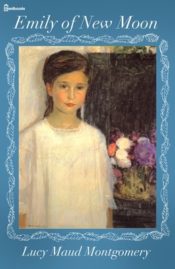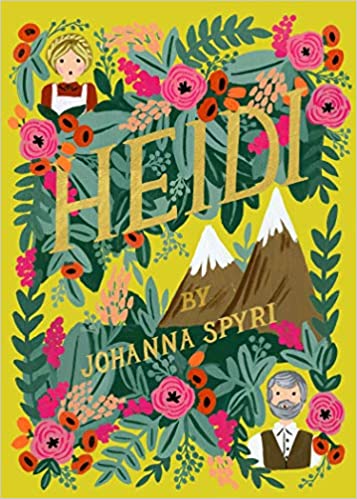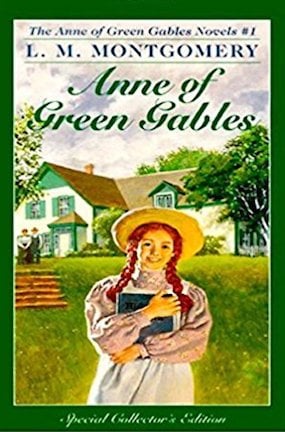Literary Orphan Girls: Plucky Heroines Melting Hearts, Overcoming Adversity
By Nava Atlas | On May 21, 2024 | Comments (0)

In the late 1800s and early 1900s, the plucky literary orphan girl became a favorite trope in children’s literature. Perhaps it’s because children were indeed commonly orphaned in those days, or that parents got in the way of exciting narratives.
Here are seven of the most enduring orphan girls in classic children’s literature: The eponymous Heidi (does she have a last name?), Rebecca Randall (Rebecca of Sunnybrook Farm); Sara Crewe (A Little Princess); Anne Shirley (Anne of Green Gables); Pollyanna Whittier (Pollyanna); Mary Lennox (The Secret Garden); and Emily Byrd Starr (Emily of New Moon).
These girls are on the cusp of adolescence, a vulnerable stage in the best of circumstances. Orphaned and foisted on spinster aunts, unrelated caretakers, distant relatives, and indifferent schoolmistresses, these girls learn to navigate the world on their own terms.
A shout-out must goto Jane Eyre, who came along in the mid-1800s, and though we do suffer along with her in her orphaned childhood, much of the story concerns her young womanhood and quest for love and independence.
There’s also Judy of Daddy-Long-Legs, whose story takes place mainly during her college years, and in which we learn of her maturation with the support of a magnanimous, anonymous benefactor.
. . . . . . . . . .
Heidi (1881)

Johanna Spyri (1827 – 1901), the author of Heidi, has been called the “Swiss Louisa May Alcott.” Tens of millions of copies of this classic children’s novel (first published in 1881) have sold worldwide in translations of more than forty languages.
Heidi is a simple and rather sentimental tale of an orphan girl (of course) who is left by her aunt Dete, who has been caring for her, with her gruff grandfather, a veritable hermit living in the Swiss Alps with a few goats.
Heidi wins him over (of course) and grows to love him, the mountains, and the little goat herd Peter, her only friend. After a time, Dete comes back for Heidi, over Grandfather’s objections, having secured a place for her as a companion to the disabled young daughter of a wealthy businessman.
Heidi grows attached to the girl, and vice versa, but can’t shake her homesickness. She is returned to Grandfather, and, after some turmoil, all is well that ends well.
More about Heidi.
. . . . . . . . . .
Rebecca of Sunnybrook Farm (1903)

Rebecca of Sunnybrook Farm by Kate Douglas Wiggin, published in 1903, is a classic American tale of an orphan girl coming into her own and finding her way in a world that’s indifferent to her plight.
Rebecca Rowena Randall comes to live with her two aunts in the fictional village of Riverboro, Maine. Rebecca’s spirit tries the patience of the more stern of her aunts but ultimately uplifts and inspires them. She faces many challenges, but along the way, learns from all of them on the road to young adulthood.
Rebecca of Sunnybrook Farm was a great success from the start. It was adapted for the the theater starting in 1910, and was filmed several times. The best-known film adaptation starred Shirley Temple (1938), with a plot rather freely altered from that of the book.
More about Rebecca of Sunnybrook Farm.
. . . . . . . . . .
A Little Princess (1905)

A Little Princess by Frances Hodgson Burnett follows a young girl with a vivid imagination as she faces abandonment at a posh boarding school in London. The novel is an expansion of Burnett’s novella, Sara Crewe: or, What Happened at Miss Minchin’s Boarding School, first published in December 1887.
When Sara Crewe first arrived at the boarding school, she was indeed treated like a princess. She was given the prettiest room, her own pony, a maid to wait on her, and the fawning attention of the headmistress, Miss Minchin.
Then news arrives that changes Sara’s life entirely. She is now an orphan alone in the world. Now she was compelled to work in the school and live as a servant.
But Sarah remains her kind, courageous self. Abused by Miss Minchin and tormented by jealous students, she never wavers in her firm belief in her worth. Instead, Sarah supposes herself a real princess and uses her vivid imagination to make over in her mind her bleak surroundings and even bleaker life.
More about A Little Princess.
. . . . . . . . . .
Anne of Green Gables (1908)

Anne of Green Gables is a the first novel in a series by beloved Canadian author L. M. (Lucy Maud) Montgomery (1874 – 1942). Her first full-length book, it was a great success from the the time it was published, and has appealing to generations of readers of all ages and backgrounds sine.
Anne Shirley is a dreamy, imaginative 11-year-old orphan girl mistakenly sent to middle-aged brother and sister Matthew and Marilla Cuthbert, who meant to adopt a boy to help on their farm.
Set in Prince Edward Island, where the author grew up, the original volume and its sequels follow Anne from her arrival in the fictional town of Avonlea, through school, college, marriage, and motherhood.
More about Anne of Green Gables.
. . . . . . . . . .
The Secret Garden (1911)

The Secret Garden, another classic by Frances Hodgson Burnett was published in 1911 after an original version was first serialized in The American Magazine in 1910. The story follows the journey of Mary Lennox, a sickly and unloved ten-year-old girl born to wealthy British parents in India.
After a cholera epidemic kills her parents, Mary is sent to England to live with her Uncle Archibald in an isolated, mysterious house. The tale follows the spoiled and sulky young girl as she slowly sheds her sour demeanor after discovering a secret, locked garden on the grounds of her uncle’s manor.
Mary befriends Dickon, one of the servant’s brother, a free spirit who was able to communicate with animals, and Colin, her uncle’s son, a neglected invalid. The Secret Garden has remained a timeless classic for its themes of friendship and the power of nature to heal the body and spirit.
More about The Secret Garden.
. . . . . . . . . .
Pollyanna (1913)

The 1913 novel Pollyanna by Eleanor H. Porter (1868 – 1920) is perhaps less familiar now than the lasting expression that grew from its sentimental story. Most everyone knows what defines a “Pollyanna” — someone who looks at the bright side of things no matter how dire, or who paints an overly optimistic picture of any situation.
Pollyanna, subtitled “The Glad Book,” was incredibly successful from the start, and inspired many adaptations in other media. Though intended as a children’s novel, it appealed to all ages.
Eleven-year-old Pollyanna Whittier is sent to live with her aunt Polly, an icy spinster. Pollyanna and her departed father had devised a “glad game,” wherein they would try to find the silver lining in any situation, no matter how dire. So when Pollyanna got a pair of crutches for Christmas instead of the doll she longed for, she decided to be glad that she didn’t actually need the crutches. You get the picture!
More about Pollyanna.
. . . . . . . . . .
Emily of New Moon (1923)

Emily of New Moon by L.M. Montgomery is the start of a trilogy of novels about Emily Byrd Starr. It invites comparison with the Anne of Green Gables series by the same author. These books, as is true for many of L.M. Montgomery’s writings, are meant for “children of all ages.”
When Emily’s father dies of consumption (what is now called tuberculosis), she is orphaned. She is sent to live at New Moon Farm to live with her aunts, Elizabeth and Laura Murray (typical literary spinsters) and cousin Jimmy.
There she makes friends with Ilse, Perry, and Teddy, each of whom has a dream based on their particular gift. Emily wishes passionately to be a writer; Ilse wants to be a speaker, Perry seems destined to be a politician, and Teddy is a talented artist.
Emily has a conflict with her Aunt Elizabeth, who’s not on board with her desire to write. Each of her friends is having an issue with a parent. Emily finds an ally in an elderly schoolteacher, who encourages her writing while being a helpful and honest critic.
More about Emily of New Moon.
More about literary orphans
- Why Do We Write About Literary Orphans so Much?
- 50+ Orphans in Literature
- 10 Orphans from Literature
Leave a Reply